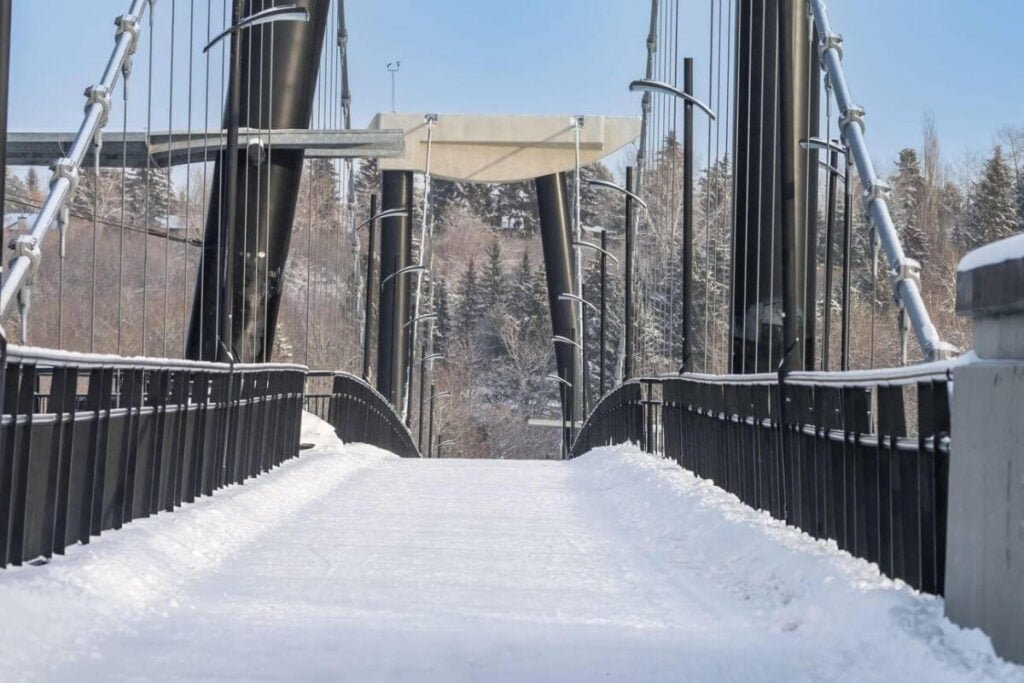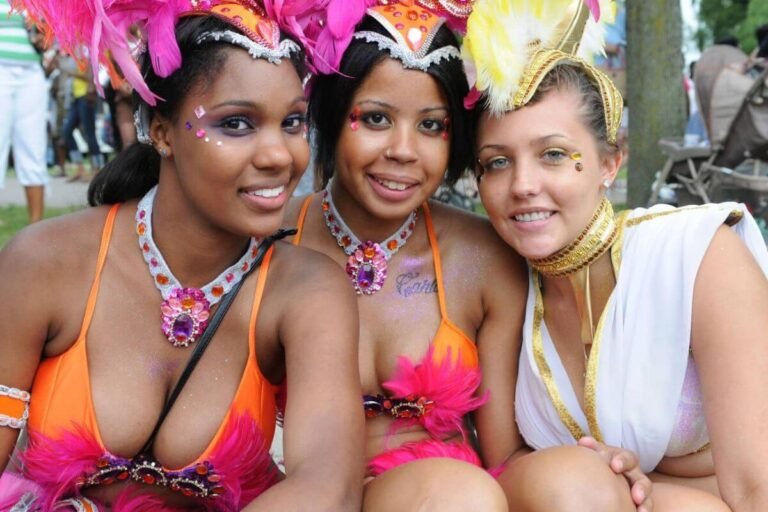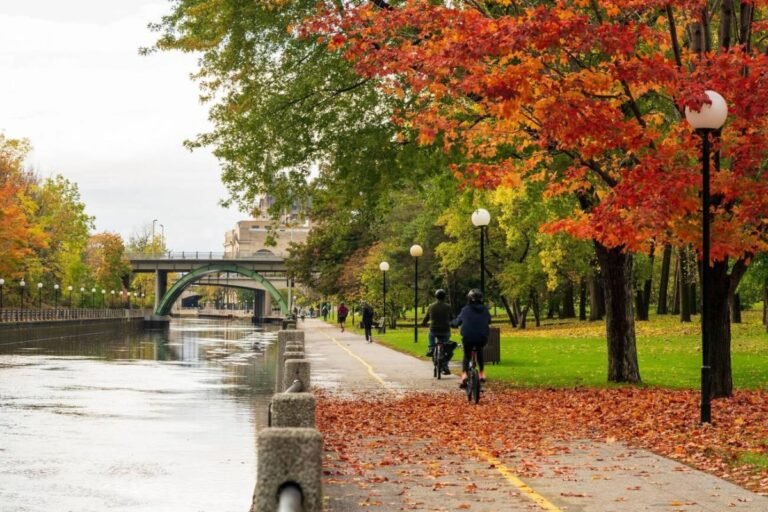Fort Edmonton Park is a captivating destination that brings Edmonton’s rich history to life. As a living history museum, the park offers an immersive experience, depicting various eras from 1846 to 1920. Visitors can step back in time and explore meticulously recreated historical settings, complete with costumed interpreters, authentic artifacts, and engaging exhibits. This article delves into the many facets of Fort Edmonton Park, highlighting its key attractions and the unique educational opportunities it provides.
Introduction
Nestled along the North Saskatchewan River in Edmonton, Alberta, Fort Edmonton Park is the largest living history museum in Canada. Since its establishment, the park has become a beloved attraction for both locals and tourists, offering a comprehensive journey through Edmonton’s past. From the fur trading era to the early 20th century, Fort Edmonton Park provides a vivid portrayal of the city’s historical development.
Fort Edmonton Park Living History Museum
Fort Edmonton Park is divided into distinct areas, each representing a different time period and aspect of Edmonton’s history. These areas are designed to offer visitors an authentic and educational experience, showcasing the evolution of the city from a fur trading post to a burgeoning urban center.

1846 Fort
The journey through Fort Edmonton Park begins with the 1846 Fort, a replica of the original Hudson’s Bay Company fort. This area provides insights into the early days of the fur trade and the interactions between European traders and indigenous peoples.
Hudson’s Bay Company Fort
The Hudson’s Bay Company Fort is a central feature of this area, complete with trading rooms, storage facilities, and living quarters. Visitors can explore the fort’s various buildings and learn about the fur trade, the goods exchanged, and the daily lives of the traders.
Indigenous Encampment
Adjacent to the fort is an indigenous encampment, showcasing traditional dwellings, tools, and crafts. This area highlights the rich cultural heritage of the indigenous peoples and their crucial role in the fur trade. Interactive exhibits and costumed interpreters provide deeper insights into indigenous traditions and lifestyles.
1885 Street
Moving forward in time, visitors arrive at 1885 Street, which depicts life in Edmonton during the late 19th century. This area reflects the town’s growth and development during the early days of settlement.
Streetscape and Businesses
1885 Street features a bustling streetscape lined with businesses, including a general store, blacksmith shop, and saloon. These establishments are furnished with period-appropriate items, offering a glimpse into the commerce and daily life of the era. Costumed interpreters demonstrate trades and interact with visitors, enhancing the immersive experience.
Residences and Public Buildings
The area also includes residential buildings and public institutions, such as a schoolhouse and a church. These structures provide insights into the social and family life of Edmonton’s early settlers. Visitors can explore the interiors, which are furnished with authentic artifacts and decorations.
1905 Street
1905 Street represents Edmonton’s transition into the 20th century, reflecting the changes brought by urbanization and modernization.
Electric Streetcar
A highlight of 1905 Street is the electric streetcar, which visitors can ride to experience early 20th-century transportation. The streetcar provides a unique perspective on how residents of Edmonton moved around the city during this period.
Businesses and Cultural Institutions
This area includes a variety of businesses and cultural institutions, such as a theatre, hotel, and newspaper office. These establishments showcase the economic and cultural development of Edmonton in the early 1900s. Interactive exhibits and performances provide additional layers of engagement and education.
1920 Street
The final area, 1920 Street, depicts Edmonton during the post-World War I era, highlighting the social and technological advancements of the time.
Automobiles and Modern Conveniences
1920 Street features automobiles and other modern conveniences that were becoming more common in the early 20th century. Visitors can see how these advancements impacted daily life and the overall development of the city.
Entertainment and Leisure
This area also emphasizes the entertainment and leisure activities of the era. Venues such as the cinema and dance hall reflect the changing social dynamics and the growing importance of recreational activities.
Special Exhibits and Interactive Experiences
Fort Edmonton Park offers a variety of special exhibits and interactive experiences that enhance the visitor experience. These activities provide deeper insights into the historical periods depicted in the park.
Costumed Interpreters
Costumed interpreters play a significant role in bringing history to life at Fort Edmonton Park. These knowledgeable and enthusiastic actors portray historical figures, conduct demonstrations, and engage with visitors, providing a dynamic and immersive learning experience.
Hands-On Workshops and Demonstrations
Visitors can participate in hands-on workshops and demonstrations that cover a range of historical skills and crafts. From blacksmithing and baking to gardening and woodworking, these activities offer a tactile and memorable way to learn about historical practices.
Seasonal Events and Festivals
Fort Edmonton Park hosts a variety of seasonal events and festivals throughout the year, adding to its vibrant atmosphere. Popular events include Halloween festivities, Christmas celebrations, and summer heritage days. These events feature special programs, performances, and activities that celebrate historical traditions and cultures.
Educational Programs and School Visits
Fort Edmonton Park is committed to education, offering a range of programs designed for students and educators. These programs provide immersive learning experiences that complement classroom studies.
School Programs
The park’s school programs are tailored to different grade levels and curricula, offering interactive and engaging ways for students to learn about history. Programs include guided tours, hands-on activities, and educational kits that bring historical concepts to life. These programs foster a deeper understanding of Edmonton’s history and cultural heritage.
Public Lectures and Workshops
In addition to school programs, Fort Edmonton Park offers public lectures and workshops on various historical topics. These events feature expert speakers and provide opportunities for lifelong learning. Topics range from local history and heritage crafts to broader historical themes, making them suitable for a wide audience.
Dining and Shopping
Visitors to Fort Edmonton Park can enjoy a variety of dining and shopping options that enhance the historical experience.
Historic Restaurants and Cafes
The park features several dining establishments that offer delicious meals in a historical setting. The Selkirk Hotel Dining Room and Johnson’s Café serve hearty fare inspired by traditional recipes, providing a taste of the past.
Heritage Shops
The park’s shops offer a range of unique merchandise, including handcrafted items, period clothing, and historical souvenirs. The shops are a great place to find special gifts and mementos that reflect the park’s themes and exhibits.
Conservation and Preservation
Fort Edmonton Park is dedicated to the conservation and preservation of historical artifacts and buildings. The park’s conservation team works diligently to restore and maintain its extensive collection, ensuring that future generations can enjoy and learn from these important pieces of history.
Visitor Information and Accessibility
Planning a visit to Fort Edmonton Park? Here’s what you need to know. The park is open seasonally, with different areas and exhibits accessible during various times of the year. Admission fees vary, with discounts available for children, students, seniors, and families. The park is committed to accessibility, providing services and facilities to accommodate visitors with mobility challenges.
Tips for Visiting Fort Edmonton Park
To make the most of your visit to Fort Edmonton Park, consider these tips:
- Check the schedule for special events and seasonal programs to enhance your visit.
- Wear comfortable shoes as you will be walking through various exhibits and outdoor areas.
- Bring a camera to capture the picturesque scenes and historical reenactments.
- Take advantage of guided tours and workshops to deepen your understanding of the exhibits.
- Plan your meals at the park’s restaurants to enjoy a full historical experience.
Future Directions and Expansion
Fort Edmonton Park continues to evolve, with plans for future developments aimed at enhancing the visitor experience and expanding its educational offerings. Upcoming projects include new exhibits, improved facilities, and increased focus on digital resources. These initiatives ensure that Fort Edmonton Park remains a leading institution in historical preservation and education.
Frequently Asked Questions
What are the main attractions at Fort Edmonton Park?
The main attractions at Fort Edmonton Park include the 1846 Fort, 1885 Street, 1905 Street, and 1920 Street. Each area offers a unique glimpse into different periods of Edmonton’s history, with interactive exhibits, costumed interpreters, and historical buildings.
Is Fort Edmonton Park suitable for children and families?
Yes, Fort Edmonton Park is an excellent destination for children and families. The park offers a variety of interactive exhibits, hands-on workshops, and seasonal events that are engaging and educational for visitors of all ages.
Are there any special events held at Fort Edmonton Park?
Fort Edmonton Park hosts a variety of special events and festivals throughout the year, including Halloween festivities, Christmas celebrations, and summer heritage days. These events feature special programs, performances, and activities that celebrate historical traditions and cultures.
How can I support Fort Edmonton Park?
There are many ways to support Fort Edmonton Park, including becoming a member, making a donation, or volunteering. Membership offers numerous benefits, such as free admission and discounts, while donations help fund preservation efforts and educational programs.
What are the park’s hours and admission fees?
Fort Edmonton Park is open seasonally, with different areas and exhibits accessible during various times of the year. Admission fees vary, with discounts available for children, students, seniors, and families. Check the park’s website for the most up-to-date information on hours and pricing.
Is Fort Edmonton Park accessible for visitors with mobility challenges?
Yes, Fort Edmonton Park is committed to accessibility and provides services and facilities to accommodate visitors with mobility challenges. This includes accessible pathways, restrooms, and transportation options within the park.
Conclusion
Fort Edmonton Park is a cornerstone of cultural and historical preservation in Edmonton. With its extensive exhibits, interactive experiences, and commitment to historical authenticity, the park offers a unique and enriching journey into the past. Whether you’re exploring the exhibits, participating in a workshop, or enjoying a meal in a historic setting, Fort Edmonton Park provides a valuable and memorable experience for all visitors.
Inbound and Outbound Links Suggestions



